Standing in sugar-white sand on South Haven, Michigan’s, South Beach, I watched BUFFLEHEAD as she sliced through the Lake Michigan chop. Her okoume hull, finished bright, glowed in the sunlight of an early July morning that felt more like autumn than summer, and her bright red sail puffed full in the freshening westerly breeze. The lone figure in her cockpit— soaked with spindrift—clung to a single sheet with one hand and a steering stick (tiller) with the other as she danced over the aquamarine waves.
The design was inspired by the birchbark canoes of French Canadian voyageurs (travelers) and Native Americans, as well as the sailing canoes originated during the 1860s by Scotsman John MacGregor. This sleek, feather-light decked sailing canoe offers balance and flexibility to 21st-century adventurers. Michigander Hugh Horton created this easily transported cockleshell for those seeking to explore the rugged Great Lakes and ocean coastlines.
At first glance, BUFFLEHEAD resembles a kayak, although she appears to be greater in size. I wondered what made her a canoe rather than a kayak. Horton said she could easily be called a “high-volume, large-cockpit kayak.” Nick Schade of Guillemot Kayaks said, “A ‘decked canoe’ is called such by the designer, and a ‘kayak’ is called a kayak by its designer. Typically a decked canoe comes from a designer working in the canoe tradition and the boat is likely derived primarily from other canoes (decked or undecked) where kayak designs evolve from other earlier kayaks.”
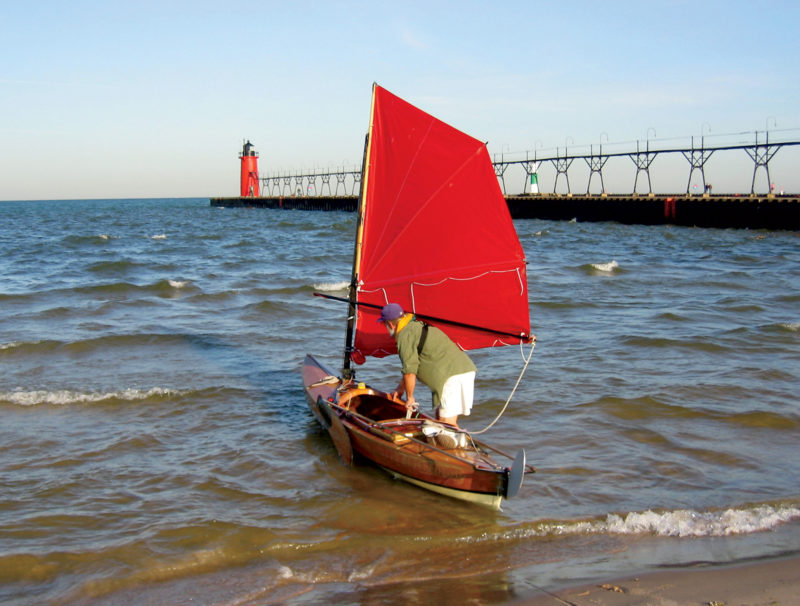 Photo by George D. Jepson
Photo by George D. JepsonWhile you may not want to try building BUFFLEHEAD without some experience under your belt, when ready, your hard work will pay off in an eye-pleasing, seaworthy craft for daysailing or extended coastal passages.
Horton has lived on the water most of his life, and began rowing fixed-seat boats from the age of six. “At 11, unpinned oars found me,” he says. “Since I eschew motors, I have rowed a lot.” After experiencing a small kayak and a double paddle in the early 1980s, his thoughts turned more and more to a craft that successfully combines paddling and sailing.
Named for the diminutive and swift species of duck, BUFFLEHEAD has an LOA of 15′ 5″, a 2′ 9″ beam, and a weight of 58 lbs. Heavy ’glass helps protect her bottom on a rocky shore or concrete ramp. The canoe’s ability to maneuver in shallow water and confined spaces allows a paddler/sailor intimate access to the natural wonders along beaches, rocky shorelines, or heavily forested and secluded streams and rivers.
In the late 1700s, voyageurs paddled birchbark canoes across a North American trade route covering more than 3,000 miles—often carrying their canoes and cargoes over grueling portage trails—as they supplied furs for the burgeoning European fashion market. These hearty souls conveyed barter goods from Montréal to the western Great Lakes, as they traversed the St. Lawrence and Ottawa Rivers, Lake Huron, the St. Mary’s River, and ultimately the sparkling, sometimes stormy North Shore of Lake Superior to a small outpost at Grand Portage in what is now Minnesota. I was surprised to learn that voyageurs often carried single square sails for the same reason BUFFLEHEAD carries her gunter rig.
A passage in the Great Lakes can fatigue even the fittest canoeist or kayaker, but by adding a sail the task becomes much more agreeable. Energy expenditure decreases when there is a breeze, and greater distances can be covered in shorter periods of time. If winds are fluky—or are blowing from the wrong direction—paddles serve well. “The voyageurs were no fools,” said Horton.
BUFFLEHEAD is a well-thought-out blend of traditional low-tech boat building and contemporary applied technology. The canoe’s hull was built from 3mm and 4mm plywood sheets over a mold setup. “It could be called ‘tack-and-tape,’” says Horton. “The idea is to hold the plywood in place and [then] add fabric in the form of cloth or tapes, set in epoxy, over the joints.” After the hull is removed from the molds, the inside surfaces are covered with Kevlar. There are five plywood panels per side, joined by S-glass (a stiff, strong fiberglass cloth) or carbon fiber on the outside. All plywood sur- faces, including the deck, are covered with one of these high-tensile-strength materials. The deck was built on a separate mold.
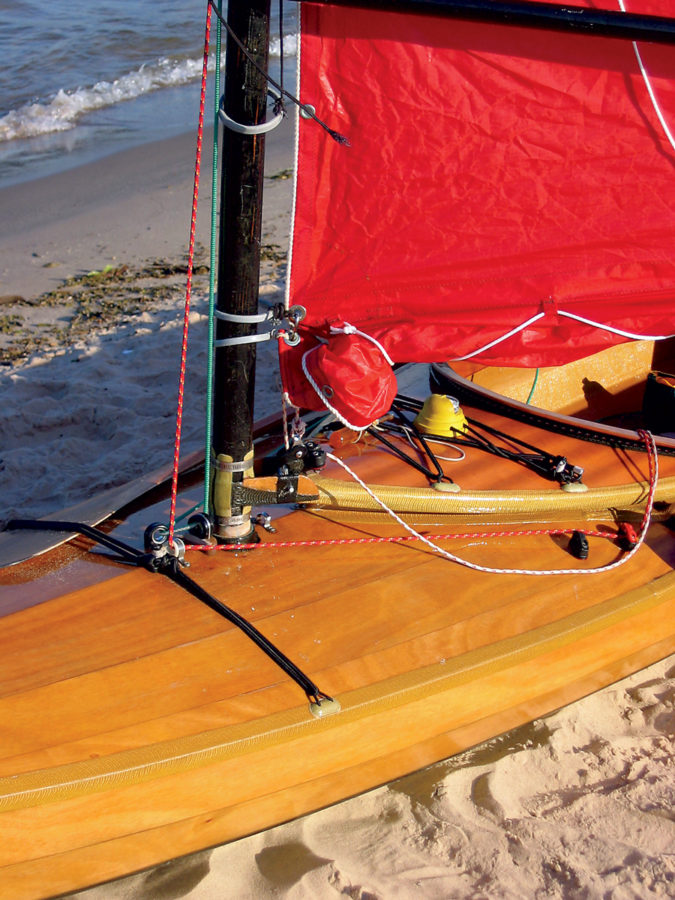 Photo by George D. Jepson
Photo by George D. JepsonA bright-finished okoume deck and hull plus a Kevlar- reinforced coaming, coated with epoxy, give BUFFLEHEAD strength and luster. The contrast of the black, carbon-fiber mast and red sail add to the boat’s visual appeal.
When Horton arrived in the South Beach parking lot in this small Lake Michigan port at the mouth of the Black River, BUFFLEHEAD was lashed to the roof of his pickup truck. Unloading the boat was a simple task that can be accomplished singlehandedly or with minimal assistance. At water’s edge, Hugh set about rigging. The lightweight mast and spar are made from hollow red-cedar cores wrapped with carbon-fiber cloth, helping to keep weight to a minimum. Within minutes, the bright red sail filled as Hugh and BUFFLEHEAD began to beat to windward in the stiff breeze. Although she appears delicate, she slices through the waves with a purpose. After years of accumulating technical data, Horton has successfully wedded high-tech materials with wood to assure strength and created a hull shape that makes the most of them. “ The underwater fullness of the hull is more in line with modern multihulls,” Horton explained.
Meade Gougeon, a pioneer in the development and application of boatbuilding epoxies, sails SERENDIPITY, one of Horton’s earlier canoes, and has been a keen observer of BUFFLEHEAD’s development. The brilliance of the design—narrow amidships with fuller ends— according to Gougeon, is its stability and weight-carrying capability of about 300 lbs.
Hugh described BUFFLEHEAD as a “50/50,” meaning the boat either can be paddled or sailed. “I could say I strive for 100/100, in that the boat should be an exceptional sailor and paddler,” he says. “But she’ll never paddle as well as a 22″-wide kayak, nor sail as well as an International 14.” The canoe’s ability to stay on course is impressive. Paddling with a comfortable rhythm is an acquired skill and requires patience gained with time in the cockpit. Raising the adjustable seat adds comfort while paddling. And as with any wooden boat, there is the pleasing natural beauty of wood grain to contemplate from the cockpit.
The sheer is low enough to allow for comfortable paddling. Horton carries both single- and double-bladed paddles for different situations. There is plenty of space in the roomy cockpit, which allows him to move around comfortably.
A single leeboard built of 3⁄4″ meranti is fitted to the port side, serving basically the same purpose as a center-board while under sail. With one of two side-by-side steering sticks in his hand, Horton maneuvered his charge almost effortlessly, jockeying BUFFLEHEAD through the various points of sail using a single part (one line) hand-held sheet, which allows him to rapidly spill wind in a sudden blow.
The space below deck offers stowage for sleeping bags, a light tent, and provisions for extended voyages. Horton has extensively tested his decked sailing canoes, cruising among the granite-studded islands and along the rugged shoreline of Lake Huron’s North Channel. He also cruised through the Beaver Islands off Michigan’s Leelanau Peninsula. During the winter, he paddles and sails BUFFLEHEAD on the west coast of Florida near Cedar Key.
The simplicity of getting out on the water with such minimal effort is appealing. Although BUFFLEHEAD is an ideal craft for present-day Great Lakes voyageurs, this nearly bulletproof little boat can also handle virtually any coastal waterway in the world. Horton, a consummate tinkerer, has spent nearly two decades testing new rigs and components. The result is BUFFLEHEAD, a design that lives up to her feathered namesake.![]()
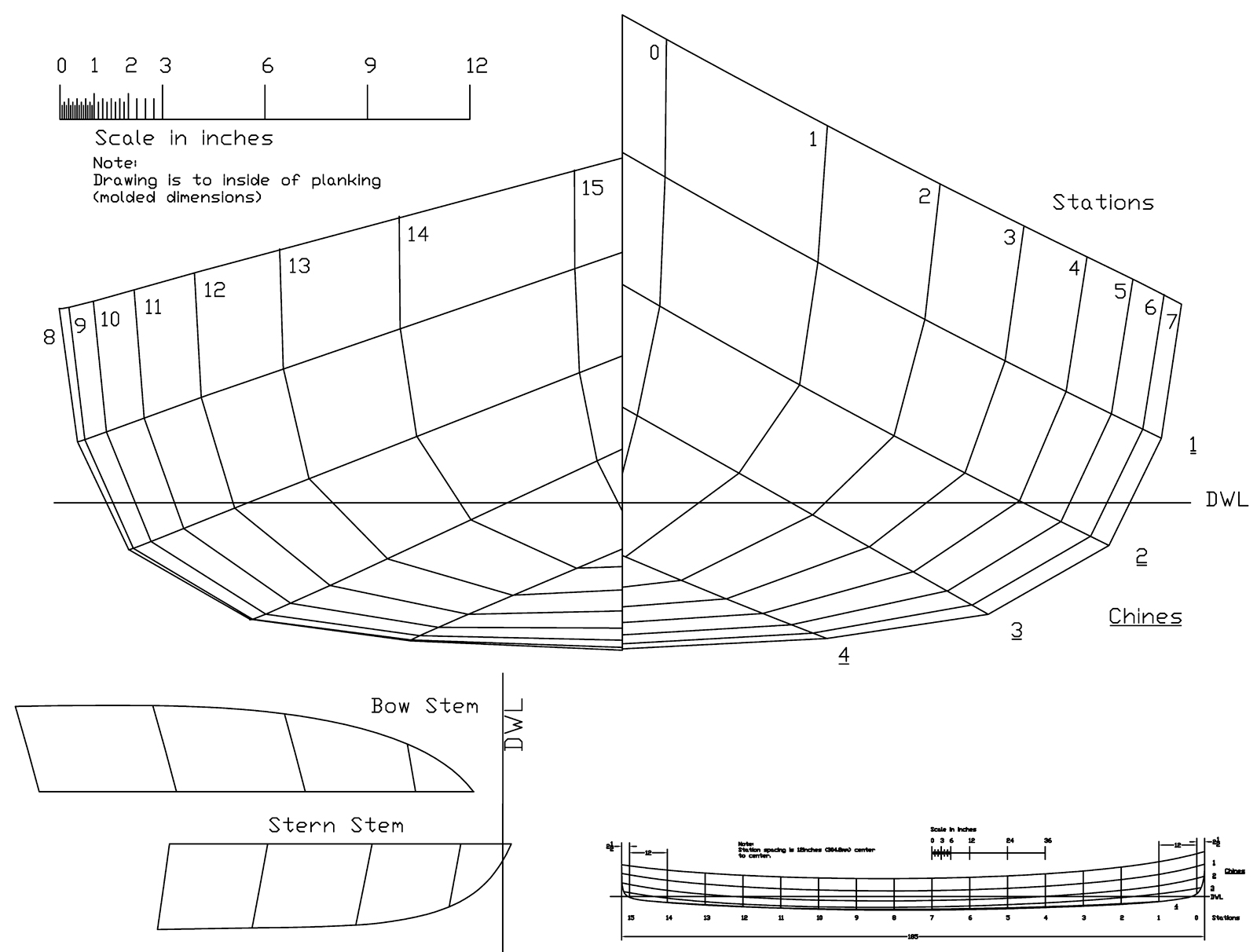
The best performing boats are often the most difficult to build. While BUFFLEHEAD’s lines show that she requires a careful hand, the shapeliness of each body plan section and their relationship to one another inspires confidence that she will part the water comfortably and efficiently.
This Boat Profile was published in Small Boats 2009. Plans for the Bufflehead are available from designer Hugh Horton for $40.
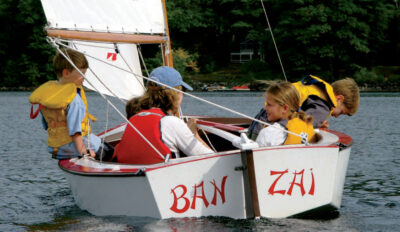
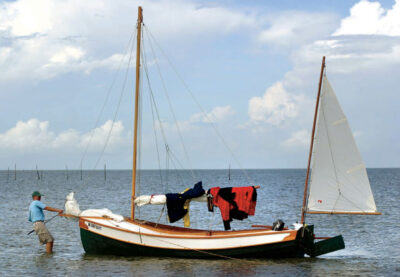
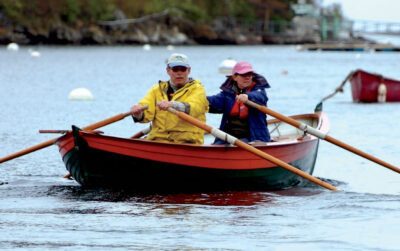
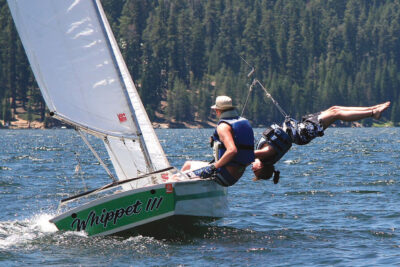
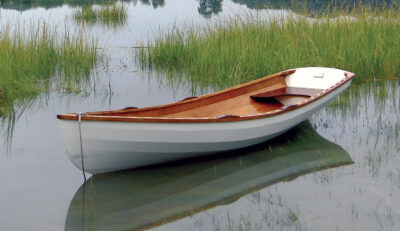
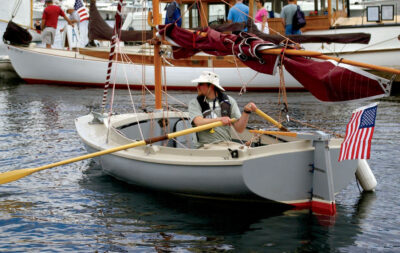
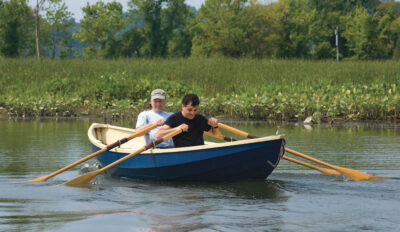
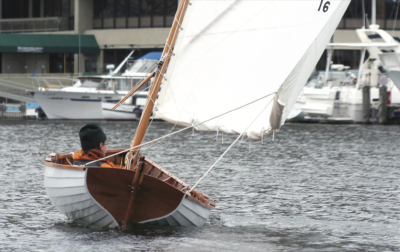
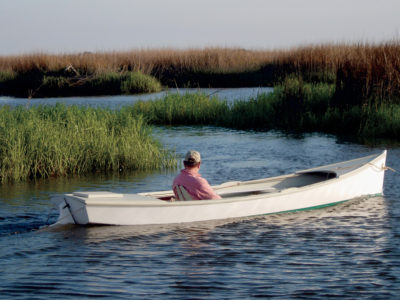
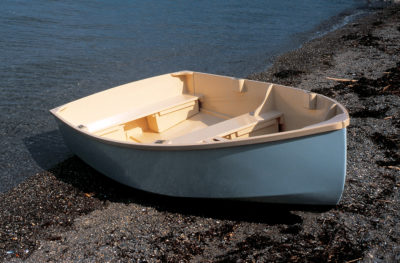


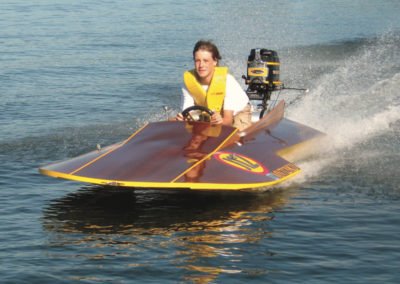
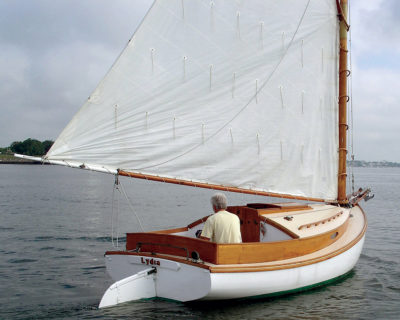
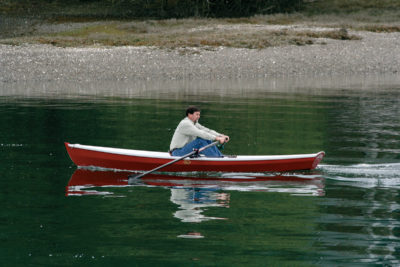
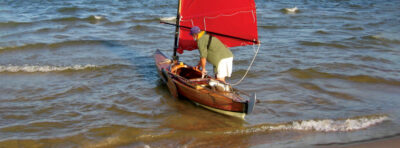
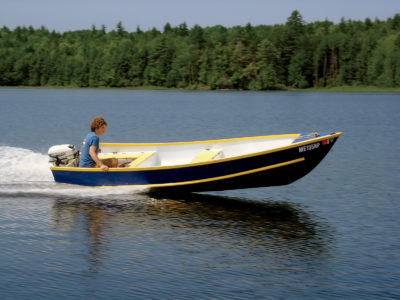
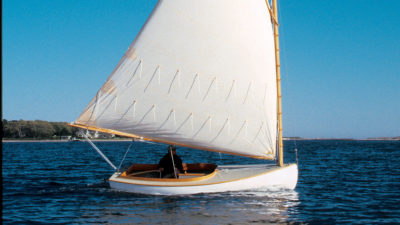
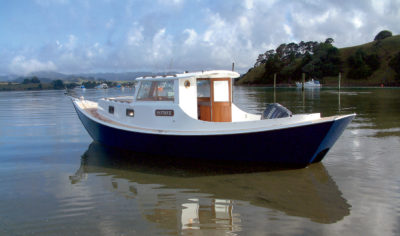

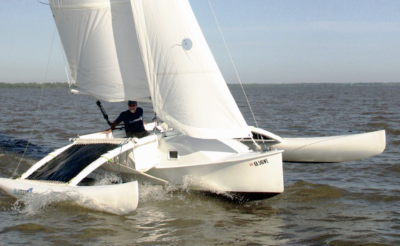
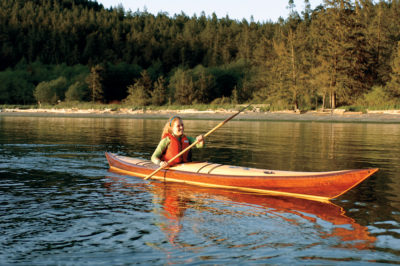
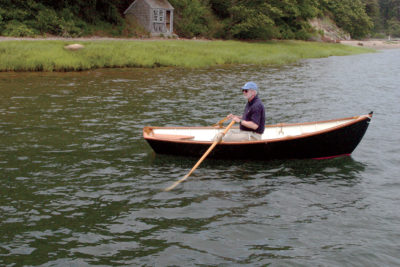
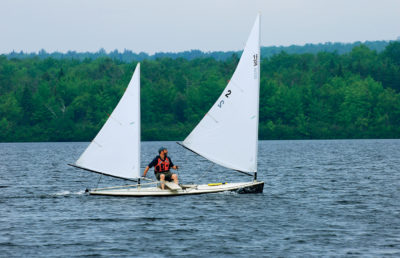
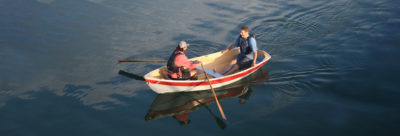
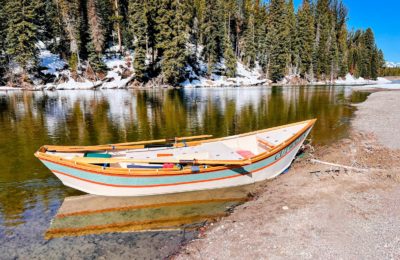
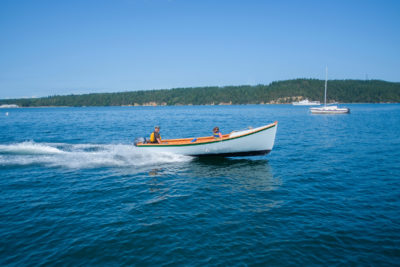
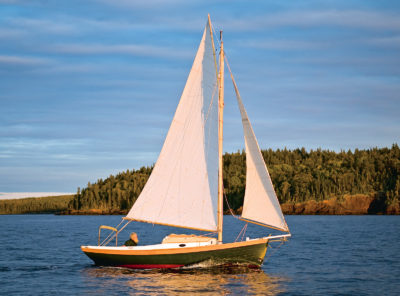
Built using 3mm ply in lapstrake. Very easy and lighter. Also used a daggerboard with cat yawl leg-o-mutton sail.
Very happy with the outcome.
I enjoyed your project. I am doing some restoration work and was wondering where you purchased the 4mm plywood.
Thank you,
Dean Lamm
There are articles about Bufflehead in back issues of Gougeon Brothers Epoxyworks (Meade Gougeon was quite taken with the canoe).
“I wondered what made her a canoe rather than a kayak.”
I recently built a self-designed boat which resembles a smaller Bufflehead (170″ by 27″), and, when completed, I wondered the same thing: “Is this a canoe or a kayak?
Now you have me thinking, “Can I put a sail on this?”